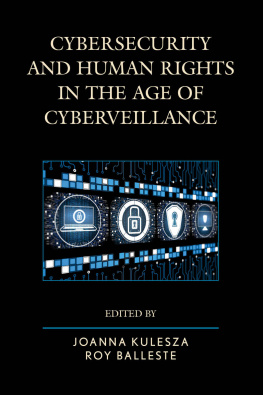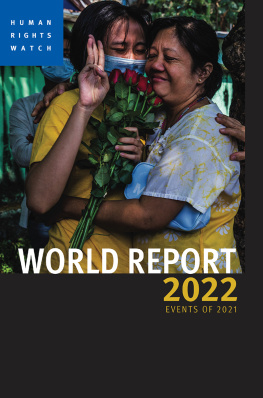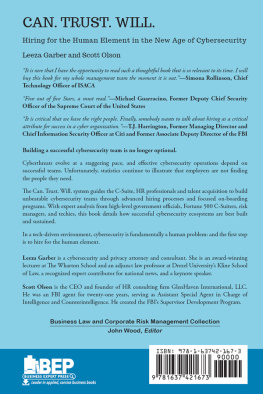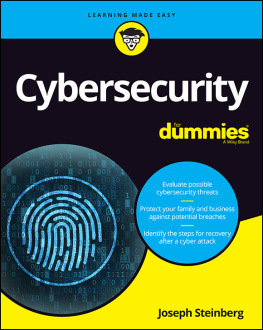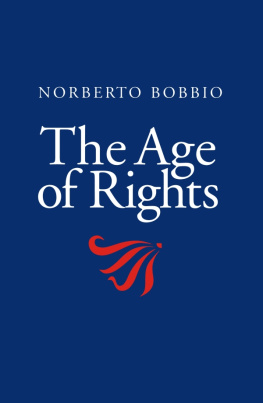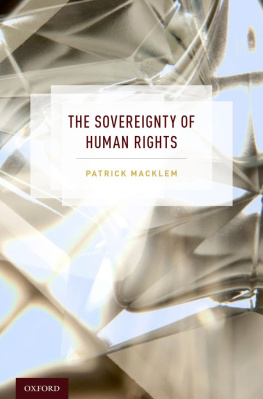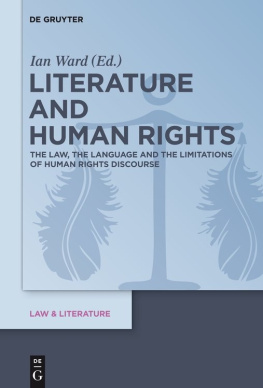Kulesza Joanna - Cybersecurity and Human Rights in the Age of Cyberveillance
Here you can read online Kulesza Joanna - Cybersecurity and Human Rights in the Age of Cyberveillance full text of the book (entire story) in english for free. Download pdf and epub, get meaning, cover and reviews about this ebook. year: 2015, publisher: Rowman & Littlefield Publishers, genre: Politics. Description of the work, (preface) as well as reviews are available. Best literature library LitArk.com created for fans of good reading and offers a wide selection of genres:
Romance novel
Science fiction
Adventure
Detective
Science
History
Home and family
Prose
Art
Politics
Computer
Non-fiction
Religion
Business
Children
Humor
Choose a favorite category and find really read worthwhile books. Enjoy immersion in the world of imagination, feel the emotions of the characters or learn something new for yourself, make an fascinating discovery.
- Book:Cybersecurity and Human Rights in the Age of Cyberveillance
- Author:
- Publisher:Rowman & Littlefield Publishers
- Genre:
- Year:2015
- Rating:3 / 5
- Favourites:Add to favourites
- Your mark:
- 60
- 1
- 2
- 3
- 4
- 5
Cybersecurity and Human Rights in the Age of Cyberveillance: summary, description and annotation
We offer to read an annotation, description, summary or preface (depends on what the author of the book "Cybersecurity and Human Rights in the Age of Cyberveillance" wrote himself). If you haven't found the necessary information about the book — write in the comments, we will try to find it.
Cybersecurity and Human Rights in the Age of Cyberveillance — read online for free the complete book (whole text) full work
Below is the text of the book, divided by pages. System saving the place of the last page read, allows you to conveniently read the book "Cybersecurity and Human Rights in the Age of Cyberveillance" online for free, without having to search again every time where you left off. Put a bookmark, and you can go to the page where you finished reading at any time.
Font size:
Interval:
Bookmark:
Cybersecurity and Human Rights in the Age of Cyberveillance
Cybersecurity and Human Rights in the Age of Cyberveillance
Edited by
Joanna Kulesza
Roy Balleste
ROWMAN & LITTLEFIELD
Lanham Boulder New York London
Published by Rowman & Littlefield
A wholly owned subsidiary of The Rowman & Littlefield Publishing Group, Inc.
4501 Forbes Boulevard, Suite 200, Lanham, Maryland 20706
www.rowman.com
Unit A, Whitacre Mews, 26-34 Stannary Street, London SE11 4AB
Copyright 2016 by Rowman & Littlefield
All rights reserved. No part of this book may be reproduced in any form or by any electronic or mechanical means, including information storage and retrieval systems, without written permission from the publisher, except by a reviewer who may quote passages in a review.
British Library Cataloguing in Publication Information Available
Library of Congress Cataloging-in-Publication Data
Names: Kulesza, Joanna, editor. | Balleste, Roy, editor.
Title: Cybersecurity and human rights in the age of cyberveillance / edited by Joanna Kulesza, Roy Balleste.
Description: Lanham : Rowman & Littlefield, 2016. | Includes bibliographical references and index.
Identifiers: LCCN 2015030976| ISBN 9781442260412 (cloth : alk. paper) | ISBN 9781442260429 (ebook)
Subjects: LCSH: Computer networksSecurity measures. | Computer security. | Human rights. | CyberspaceSocial aspects.
Classification: LCC TK5105.59 .C88 2016 | DDC 303.48/34dc23 LC record available at http://lccn.loc.gov/2015030976
 TM The paper used in this publication meets the minimum requirements of American National Standard for Information Sciences Permanence of Paper for Printed Library Materials, ANSI/NISO Z39.48-1992.
TM The paper used in this publication meets the minimum requirements of American National Standard for Information Sciences Permanence of Paper for Printed Library Materials, ANSI/NISO Z39.48-1992.
Printed in the United States of America
To the students of international law.
Cybersecurity: Its Many Actors and the
Human Rights Message
This book offers a captivating insight into some of the most crucial cybersecurity issues. Under the perspective of human rights, it is structured as a collection of chapters covering research on various current questions. Due to their complexity, the answers provided are far from simple. They are rather extensive and multifaceted. The book should be of particular interest not only to lawyers and legal researchers but also to Internet policy professionals and criminologists.
Chapter 1, Defining Cybersecurity: Critical Infrastructure and Public-Private Partnerships, authored by Joanna Kulesza, extensively analyzes the double-edged notion of cybersecurity, its meaning and goals: it expresses both a particular need for the adoption of certain measures and at the same time a safeguard for opportunities and liberties. In order to be effective, cybersecurity has to be connected with the notions of cyberthreat and cybercrime in order to provide security requirements and obligations related to them under the prism of global cooperation and universal standards. It also refers to the meaning of critical infrastructure and identifies the actors under particular cybersecurity obligations. It finally stresses the role of private actors in ensuring cybersecurity, the role of the governments to facilitate a public-private cooperation, and the need for a thorough reference to international human rights standards.
Dimitrios Delibasiss Cybersecurity and State Responsibility: Identifying a Due Diligence Standard for Prevention of Transboundary Threats in chapter 2 then moves from the role of the private actors to the principle of state responsibility and how it can be set as a reference point to address and regulate computer network attacks as entailed in the new term of cyberwarfare. This new form of warfare is more informal, decentralized, and outsourcing based. The principle of the legal international obligations is highlighted, as it can be used as one of the main foundations for the creation of a regulatory framework. Any countermeasures, though, must be in accordance with the proportionality principle and must be distinguished from the plea of necessity, which must be applied in cases of emergency only. Based on the state responsibility and sovereignty paradigm, therefore, certain obligations can be extracted not only toward a states own people but also toward the rest of the international community.
Chapter 3, In Harms Way: Harmonizing Security and Human Rights in the Internet Age, written by Roy Balleste, deals with the challenging issue of harmonizing security and human rights in the digital era. In order to achieve that, the protection of social and democratic values must be considered a prerequisite in order to reconcile this social contract and cybersecurity. The issue of proportionality when security measures have to be applied is also highlighted, along with the necessity of cooperation between governments and all stakeholders. The Internet and its security must be studied from the prism of international human standards and not merely addressed with criminal law principles.
Chapter 4, Privacy versus Security: Identifying the Challenges in a Global Information Society, written by Rolf H. Weber and Dominic N. Staiger, builds further on this perspective and identifies the challenges and tensions between privacy and security and the need to maintain a balance in order to avoid privacy abuses. The main question, therefore, is whether the measures that limit privacy are proportionate to the purpose they want to achieve. The new technological developments have grown up the gap between technical capabilities and privacy laws, and a new framework is required. An extensive analysis is provided with all the risks that privacy encounters in the light of security in the areas of data collection and use, identification, and surveillance. The need to adjust the legal frameworks to these technological challenges is more pressing than ever, and the best way to achieve this is through the conclusion of an international agreement.
Chapter 5, Freedom of Expression, Human Rights Standards, and Private Online Censorship, authored by Monica Horten, focuses on the conflict of copyright enforcement and freedom of expression online and answers the question of how to interpret the duty of states with regard to private actors when applying content restrictions. Underlying network technologies on the one hand enable free speech but on the other hand hinder it, as they can be used to restrict Internet users activities. This restrictive functionality must, first of all, be in compliance with human rights law, and it is a states duty to provide adequate safeguards and have special duties with regard to private actors.
Chapter 6, (Global) Internet Governance and Its Discontents, written by Marianne I. Franklin, illuminates Internet governance as an international and geopolitical undertaking, in contrast with a conception that characterizes it as a place of minimal state intervention. It is increasingly regarded as an international human rights affair. Starting from some historical and definitional points, the discussion moves to more organizational and participatory issues. It concludes on the political character of Internet governance and the fact that many of the political and sociocultural issues arising for the future of Internet policy making are not new as such but only in relation to their techno-legal implications.
Francesca Musianis Walled Gardens or a Global Network?: Tensions, (De-)centralizations, and Pluralities of the Internet Model has a more technical character. Starting from the Internet history, its architecture, and the principle of decentralization that qualified Internet genesis, it continues with new alternative Internet service approaches. Trying to identify how the Internet is technically shaped, it comes to the conclusion that it is based not on a single principle but rather on the coexistence of various actors.
Next pageFont size:
Interval:
Bookmark:
Similar books «Cybersecurity and Human Rights in the Age of Cyberveillance»
Look at similar books to Cybersecurity and Human Rights in the Age of Cyberveillance. We have selected literature similar in name and meaning in the hope of providing readers with more options to find new, interesting, not yet read works.
Discussion, reviews of the book Cybersecurity and Human Rights in the Age of Cyberveillance and just readers' own opinions. Leave your comments, write what you think about the work, its meaning or the main characters. Specify what exactly you liked and what you didn't like, and why you think so.

